Once and Future Medicine
What a difference a century makes! First, take a look back at some of the medical and technological advances that have occurred since 1900. And on the following pages, marvel as selected DMS faculty members prognosticate about the state of medicine in 2100.

Text by Laura Stephenson Carter
Portraits by Robert Gosselin
If this article about medicine's past and future were appearing in a magazine dated Spring 1900, the manuscript would have been written on a typewriter instead of a computer, and the pages would have been printed with a hot lead press instead of an offset printing plate made directly from a digital file.
But its subject matter would be even more radically different than its form. A hundred years ago, not even Jules Verne could have imagined all of the medical and technological advances that would sweep through the 20th century. True, he did predict space travel and deepsea exploration. But consider also heart transplants, the Internet, testtube babies, television, gene therapy . . . and these advances represent only a fraction of the past century's remarkable achievements.
Is the next century likely to bring such dramatic change? Dartmouth Medicine has asked 17 members of the DMS faculty to play Jules Verne and predict what medicine and biomedical science might look like 100 years from now. That's a tall order—even the venerable Scientific American, in a December 1999 look at the future, only dared ask its experts to look ahead 50 years.
But first, to put the faculty members' prognostications in context, let's look back 100 years. During the 20th century, doctors and scientists developed antibiotics, devised new surgical procedures, described the structure of DNA, and made countless other discoveries. Inventions in other fields have been critical to medical progress, too. Plastics, for instance, are used for everything from suture material to heart valves. And where would present-day medicine be without computers? So, before peeking at the predictions on the following pages, take a look at some of the highlights of the last century:
1900-1909: Earth's population is 1.6 billion; four major blood groups are identified; first nerve suture is performed; Wright brothers make first sustained heavier-than-air flight; electrocardiograph is invented; xrays are used to treat cancer; first direct blood transfusion is performed; compulsory vaccination laws are upheld by U.S. Supreme Court; vitamins are identified as essential for health; plastic is invented.
1910-1919: First immunosuppressive drug is developed; superconductivity is discovered; model of the atom is developed; kinetic theory of gases is proposed; first "map" of a chromosome is produced; 1918 in- fluenza pandemic kills at least 20 million people.
1920-1929: Insulin is isolated; experimental television is developed; lack of vitamin D is shown to cause rickets; first analog computer is created; urease enzyme is shown to be a protein; Alexander Fleming discovers penicillin in mold; plastics come into commercial use.
1930-1939: Cortisone is isolated; sulfa drugs are discovered; yellow fever vaccine is developed; first television pictures are transmitted.
1940-1949: Penicillin is developed as an antibiotic; Rhesus (Rh) factor in blood is discovered; first fully electronic computer is built; kidney dialysis machine is developed; microwave oven is patented; World Health Organization is established; term "cybernetics" is coined.
1950-1959: Contact lenses come into use; the heart-lung machine is developed; open-heart surgery is first conducted; polio strikes 50,000 Americans; structure of DNA is described by James Watson and Francis Crick; first successful kidney transplant is performed; Salk polio vaccine is administered; birth control pill is developed; Soviet Union launches artificial satellite into orbit around Earth; ultrasound is used to diagnose fetal disorders; first human pacemaker is implanted.
1960-1969: John Glenn is first American to orbit Earth; measles vaccine is licensed; Surgeon General Luther Terry links smoking to lung cancer; mammography is introduced; a human heart is successfully transplanted; Neil Armstrong and Buzz Aldrin walk on the moon.
1970-1979: Fiber optic technology is developed; removable floppy disks are introduced; CAT scan machine is developed; microprocessor chip is invented; Internet is conceived; MRI is developed; personal computers are introduced; first commercial genetic engineering firm, Genentech, is founded; balloon angioplasty is developed; first testtube baby is born; world is declared free of smallpox; cellular phone networks are introduced.
1980-1989: First American infertility clinic opens; AIDS is recognized by U.S. Centers for Disease Control; first genetically engineered vaccine —against hoof and mouth disease—is made available by Genentech; interferon is first used in cancer patients; first artificial heart is implanted in a person; compact disc is introduced by Philips and Sony; computer-operated robotic arm is used in brain surgery; Human Genome Project starts; gene that causes cystic fibrosis is identified.
1990-1999: Four-year-old girl with severe combined immunodeficiency is first patient to receive gene therapy; world's first baboon-to-human liver transplant is performed; Scottish researchers clone a sheep; number of people connected to Internet swells to an estimated 135 million; Science hails stem cell research as 1999's breakthrough of the year; world's population reaches 6 billion.
Rosalind Stevens, M.D.
An assistant professor of surgery (ophthalmology), Stevens is chief of ophthalmology at DHMC. She has traveled widely doing volunteer work in developing countries.
Vision
 I think that 100 years from now,
you'll be able to take a pill to prevent
cataracts—which occur
now because of poor nutrition,
genetics, and aging. We'll also
have a genetic way to fix diabetes,
the number-one cause of
blindness in this country, as well
as age-related macular degeneration,
another common cause of
blindness.
I think that 100 years from now,
you'll be able to take a pill to prevent
cataracts—which occur
now because of poor nutrition,
genetics, and aging. We'll also
have a genetic way to fix diabetes,
the number-one cause of
blindness in this country, as well
as age-related macular degeneration,
another common cause of
blindness.
Your refractive error will be predicted when you're born and fixed before you get out of the hospital. You might even be able to see better than 20/20 if you choose to have implanted, highpowered intraocular lenses that would focus like telescopes. And probably, in just a few years, we'll be able to do vision screening tests from a distance.
I expect we'll also be able to transplant the optic nerve and retina, and maybe even clone eyes from skin cells. Imagine being able to grow a new eye (or two or three, or even five) and rotate it into position.
Tiny migrating computers might be used for surgery and ophthalmology—they would go inside the eye and dissect tissue or deliver drugs.
The question is where the Third World is going to be in 2100. I hope we'll be a global economy and have a global educational system by then.
Jay Dunlap, Ph.D.
Dunlap, recently named chair of the new Department of Genetics, has been a professor of biochemistry at Dartmouth since 1984.
Genetics
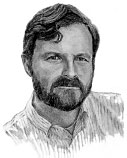 A number of good things will
come as a result of knowing all
the genes in the human genome,
just as there have been a number
of good things that have resulted
from being able to split the atom.
But the results are not going to
all be good. Yet we can't pretend
that we shouldn't split atoms any
more than we can pretend that
we don't want to know what all
the genes do. It won't be as simple
as developing antibiotics
was—as intellectually or morally
simple—because it was clear
who was sick and who wasn't.
With genetics, we'll find that
we're all sick.
A number of good things will
come as a result of knowing all
the genes in the human genome,
just as there have been a number
of good things that have resulted
from being able to split the atom.
But the results are not going to
all be good. Yet we can't pretend
that we shouldn't split atoms any
more than we can pretend that
we don't want to know what all
the genes do. It won't be as simple
as developing antibiotics
was—as intellectually or morally
simple—because it was clear
who was sick and who wasn't.
With genetics, we'll find that
we're all sick.
We'll be able to diagnose at birth all known genetic diseases, predispositions to diseases or conditions, and even genetically determined characteristics like depression, violence, optimism, and cheerfulness. While gene therapy for many diseases will be available, it will be expensive and not necessarily covered by insurance or the government. There will be a proliferation of disease affinity groups, and they'll all be lobbying Congress for money to fix their particular disease.
I can imagine that organs will be cloned, too, but that's real First World medicine. The Third World countries will be worried about feeding everybody and fighting diseases.
"In 2100, while you're skiing or engaging in other vigorous activities, you might wear a 'smart suit'-a one-person airbag. As you start to fall, the garment would rapidly calculate how many forces your knee can take before your ligaments snap and would then create opposing forces to counteract the fall."
Joseph Henderson, M.D.
An associate professor of community and family medicine, Henderson is also the director of DMS's Interactive Media Lab.
Medical education
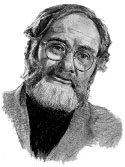 In 100 years, most medical education
will be done at a distance.
Medical students can be working
in any clinical situation anywhere,
with virtual teachers instructing
them and providing
feedback. People could even get
medical degrees at their own
pace without giving up their current
lives. Interactive multimedia
programs will teach the basic
skills, knowledge, and science,
and will include simulated patient
encounters so students can
"experience" the doctor-patient
relationship. Technology will
also be used to produce experiences
for students on demand,
and virtual reality technology
may be so improved that students
will be able to see, hear,
and feel what it's like to perform
an operation.
In 100 years, most medical education
will be done at a distance.
Medical students can be working
in any clinical situation anywhere,
with virtual teachers instructing
them and providing
feedback. People could even get
medical degrees at their own
pace without giving up their current
lives. Interactive multimedia
programs will teach the basic
skills, knowledge, and science,
and will include simulated patient
encounters so students can
"experience" the doctor-patient
relationship. Technology will
also be used to produce experiences
for students on demand,
and virtual reality technology
may be so improved that students
will be able to see, hear,
and feel what it's like to perform
an operation.
Medical education may also involve training a new type of provider, as virtual house calls and virtual workplace calls replace visits to the doctor's office. Elderly patients, for instance, could be monitored at home, but would still need to talk to a caring provider. Perhaps a new position will be created—a provider concerned with counseling patients, not in a psychiatric or psychosocial sense, but to be able to check with patients to see how things are going.
Joseph Rosen, M.D.
Rosen, an associate professor of surgery (plastic and reconstructive), is also an adjunct member of the faculty at Dartmouth's Thayer School of Engineering.
Virtual reality
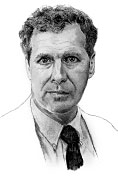 I believe that in 100 years, we'll
each have our own personal virtual
computer model that will be
constantly updated to reflect injuries,
accidents, diseases, wear
and tear, repairs, etc. It will live
in a central databank repository
in cyberspace, and your doctor
will be able to access it from anywhere
in the world. It would
come in handy, for instance, if
you needed a knee replacement.
Your doctor could test several
different kinds of knee implants
on the model, run the clock in
the computer on fast-forward,
and see what will happen with
each of the different replacement
options in two years, or 10
years, or even 20 years—and
thus decide which new knee is
best for you.
I believe that in 100 years, we'll
each have our own personal virtual
computer model that will be
constantly updated to reflect injuries,
accidents, diseases, wear
and tear, repairs, etc. It will live
in a central databank repository
in cyberspace, and your doctor
will be able to access it from anywhere
in the world. It would
come in handy, for instance, if
you needed a knee replacement.
Your doctor could test several
different kinds of knee implants
on the model, run the clock in
the computer on fast-forward,
and see what will happen with
each of the different replacement
options in two years, or 10
years, or even 20 years—and
thus decide which new knee is
best for you.
Of course, we may also be able to grow replacement parts by then—some of your cells could be used to clone a knee or whatever body part you need.
Scanners embedded in our doorways at home, or in public places like airports, will analyze you as you walk through, compare you to your virtual model, and warn you that you have a lesion that is changing into cancer or that something is wrong with your liver. The scanner may even be able to zap the problem on the spot.
Tiny robots that you swallow might also perform surgery. They'd go right to the problem area and use lasers or stitching or, like an insect, ooze out a healing material.
And if you want to avoid injuring your knees while you're skiing or engaging in other vigorous activities, you might wear a "smart suit"—a one-person airbag. As you start to fall, the garment would rapidly calculate how many forces your knee can take before your ligaments snap and would then create opposing forces to counteract the fall.
Eugene Lariviere, M.D.
An assistant professor of pediatrics at the Dartmouth-Hitchcock Clinic in Manchester, N.H., Lariviere is a 1963 graduate of DMS.
Children
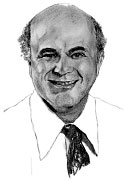 All of the medical miracles will
be very exciting, but I would
rather that every child in the
world has a decent place to live,
a decent meal to eat, safe water
to drink, decent sanitation, and
a mother who gets good prenatal
care. We would do a lot more
good with that than with anything
we could develop in the
laboratory. If the medical technology
only helps the relatively
small populations of the United
States, Canada, and Western Europe,
and the rest of the world is
still living in poverty and not
having their basic needs met,
then we will have failed, even
though our own children may
look like they're doing wonderfully
well.
All of the medical miracles will
be very exciting, but I would
rather that every child in the
world has a decent place to live,
a decent meal to eat, safe water
to drink, decent sanitation, and
a mother who gets good prenatal
care. We would do a lot more
good with that than with anything
we could develop in the
laboratory. If the medical technology
only helps the relatively
small populations of the United
States, Canada, and Western Europe,
and the rest of the world is
still living in poverty and not
having their basic needs met,
then we will have failed, even
though our own children may
look like they're doing wonderfully
well.
I'm also hoping that 100 years from now we are much wiser in terms of prevention. In our society, medical care has followed the "Lone Ranger model." We rush in to rescue the baby who was born at 24 weeks, when we could have prevented the premature birth by stopping the parents from smoking, drinking, or engaging in other behaviors that we know have serious consequences during pregnancy. I hope we will have broken the chain of child abuse and violence, too.
The ability to diagnose and treat diseases at birth based on genetics is both a terrific blessing to mankind and a terrible scourge, because it's a return to eugenics in a new way. So I have hopes and I have fears whether we are going to be smart enough to know what to do with this knowledge.
Herbert Maurer, M.D.
Maurer, a professor of medicine, is an oncologist at DHMC's Norris Cotton Cancer Center.
Cancer
 I don't think cancer is going to
be a problem in 2100. We will be
dealing with all kinds of other
problems, like how to support
the world population. The biogenetics
revolution is going to
involve gene-modified food so
we can sustain the ability to feed
people.
I don't think cancer is going to
be a problem in 2100. We will be
dealing with all kinds of other
problems, like how to support
the world population. The biogenetics
revolution is going to
involve gene-modified food so
we can sustain the ability to feed
people.
We will have a genetic understanding of every disease, and we'll be able to shut off or modify or replace abnormal genes, stimulate the immune system so the body recognizes abnormal cells, and advise people to avoid certain behaviors. Instead of using "cannons" or "atomic bombs" to blow cancer away, I think we will have found a "sniper" that can get into the cell, or a way to stimulate the immune system to detect a cancer and wipe it out. Targeted prevention and chemoprevention are going to be the major thing. To prevent lung cancer, for instance, a smoker might be able to inhale a retinoid, a vitamin A derivative, in cigarette smoke.
We'll have a whole different set of diseases that we haven't even started to think about. We may all be on the moon, or we may go to Mars or another planet, where a whole different set of things may invade us.
Peter Mogielnicki, M.D.
A professor of medicine, Mogielnicki is chief of the medical service at the VA Medical Center in White River Junction, Vt.
Finances
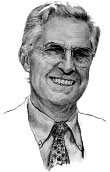 The big social question will be
"What is an acceptable human
life span, after which health care
will not be something that people
choose, want, deserve, or are
entitled to?" Sustaining life indefinitely
may be technically feasible
in the future, but extremely
expensive. Since no modern
society will tolerate a two-class
system in which the privileged
live longer than others, I foresee
a consensus developing over
what's a reasonable life span and
how much health-care individuals
should be entitled to. The
government is certainly going to
have a role in regulating, financing,
and providing universal access
to health care.
The big social question will be
"What is an acceptable human
life span, after which health care
will not be something that people
choose, want, deserve, or are
entitled to?" Sustaining life indefinitely
may be technically feasible
in the future, but extremely
expensive. Since no modern
society will tolerate a two-class
system in which the privileged
live longer than others, I foresee
a consensus developing over
what's a reasonable life span and
how much health-care individuals
should be entitled to. The
government is certainly going to
have a role in regulating, financing,
and providing universal access
to health care.
Industries that have created health risks will be expected to share in the costs of treating the diseases they've created. In addition, taxpayers may be reluctant to pay for the medical consequences of other people's risktaking behavior, such as smoking, not wearing seatbelts, etc. That's going to create terrible tension. Then we're probably going to find out that risk-taking behavior is a genetic disease.
And probably, thanks to interactive computer technology, we'll be able to perform simple diagnostic and therapeutic procedures ourselves. And major surgery, except for trauma, may become unnecessary, as genetic manipulation and minimally invasive procedures with miniature needles and catheters become possible.
Somebody's also going to come up with a brilliant way to reinvent the environment to take care of people once they lose their ability to function physically. Can you imagine that maybe 100 years from now, even if you are in a nursing home, you could be virtually present in your children's home, playing with your grandchildren?
"Instead of using 'cannons' or 'atomic bombs' to blow cancer away, I think we will have found a 'sniper' that can get into the cell, or a way to stimulate the immune system to detect a cancer and wipe it out. Targeted prevention and chemoprevention are going to be the major thing."
John Wasson, M.D.
The H.O. West Professor of Geriatrics, Wasson is also a professor of community and family medicine and of medicine, and the director of Dartmouth's Center for Aging.
Aging
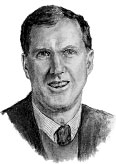 I think the unexpected will happen.
At least one large, highly
disruptive socioeconomic event
—something global, on the scale
of a major economic depression
or war—is likely to occur between
now and 2030. It might be
triggered by a large-scale phenomenon,
such as population
pressures or environmental degradation,
or by a seemingly local
business cycle or military adventure.
If, at that time, the United
States is particularly challenged
by the needs of its growing elderly
population, we should anticipate
a fundamentally restrictive
change in social policies and
practices toward the elderly and
other vulnerable segments of the
population.
I think the unexpected will happen.
At least one large, highly
disruptive socioeconomic event
—something global, on the scale
of a major economic depression
or war—is likely to occur between
now and 2030. It might be
triggered by a large-scale phenomenon,
such as population
pressures or environmental degradation,
or by a seemingly local
business cycle or military adventure.
If, at that time, the United
States is particularly challenged
by the needs of its growing elderly
population, we should anticipate
a fundamentally restrictive
change in social policies and
practices toward the elderly and
other vulnerable segments of the
population.
On the other hand, there will be more and better technology to extend life and reduce disability. Sophisticated interactive technologies may include robots that help you move, hear, see, even bathe. Through geneticbased medicine, we will have the capacity to correct a number of chronic, degenerative, or fatal diseases and conditions such as cardiovascular disease, stroke, breast cancer, and Alzheimer's. However, I believe a single antiaging, gene-based therapy will not emerge.
The future of aging in the United States depends more on our ability to have a principled and deep discussion of social structure, social expectations, and intergenerational relationships than on the emergence of new medical technology.
Jocelyn Chertoff, M.D.
Chertoff, a gastrointestinal radiologist, is an associate professor of radiology and of obstetrics and gynecology. She is also the assistant medical director of medical staff affairs for DHMC.
Imaging technology
 I'm really not a visionary. I can
remember hearing about very sophisticated
cross-sectional imaging
in medical school. I just
laughed and said, "Oh, that's
never going to happen."
I'm really not a visionary. I can
remember hearing about very sophisticated
cross-sectional imaging
in medical school. I just
laughed and said, "Oh, that's
never going to happen."
But I suspect that in 100 years, three-dimensional imaging —CAT scans, magnetic resonance, three-dimensional ultrasound —is going to be huge. And we are going to have very sophisticated noninvasive techniques, which will be cheap, low-risk, efficient, easily per formed, easily interpreted, and accessible to everybody.
X-rays and radiation will not disappear completely, but we will have found ways to use lower doses of radiation. There will be more directed imaging designed to specifically identify disease processes, or directed therapies that go right to the tumor or lesion rather than imaging that only shows a global view of the patient.
The equipment will be small enough and affordable enough that there can be more imaging centers. You will also be able to consult experts by sending images electronically. However, I don't envision something as small as a Star Trek tricorder that you wave over someone's body.
Misty Blanchette Porter, M.D.
Porter is an assistant professor of obstetrics and gynecology, as well as medical director for DHMC's assisted reproduction program.
Fertility
 Subspecialty-trained doctors,
not general practitioners, will be
the only ones providing infertility
care in the future. And, because
of health concerns, the
government will set an upper age
limit for women wishing to get pregnant,
as well as initiate legislation
to prevent multiple gestations.
Subspecialty-trained doctors,
not general practitioners, will be
the only ones providing infertility
care in the future. And, because
of health concerns, the
government will set an upper age
limit for women wishing to get pregnant,
as well as initiate legislation
to prevent multiple gestations.
I don't think we'll be able to grow a baby completely outside a woman's body in 100 years, although we will, by then, understand more about the complex signaling between an embryo and the endometrial lining in the uterus; about the process of placentation, where the fetus burrows into the maternal circulation; and even about the signal for ovulation. We'll also be able to cryo-preserve eggs and ovarian tissue, as well as delay or modify ovulation so a woman can use her own eggs, rather than donor eggs, when she is ready to conceive. We may also be able to transfer the DNA from an older egg into a young egg.
But because of the fears with regard to cloning, I suspect that it will be a long time before we even consider that as a reasonable option.
Jay Buckey, M.D.
A research associate professor of medicine, Buckey was an astronaut on the Space Shuttle Columbia's STS 90 mission in April 1998.
Space medicine
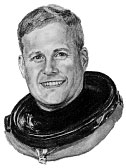 I think one of the most exciting
things is that 100 years from
now, people may be living on
other planets or out in space.
That would be a major point in
our evolution—being able to
leave our home planet.
I think one of the most exciting
things is that 100 years from
now, people may be living on
other planets or out in space.
That would be a major point in
our evolution—being able to
leave our home planet.
Astronauts on long space voyages will need a medical system that can handle any situation. They could wear tiny sensors that would allow Earthbased physicians to monitor their health, identify problems, and even correct them from afar using telemedicine technology. Medical doctors on the spacecraft could practice their medical skills using virtual-reality simulators and could practice surgery on three-dimensional computer models of their fellow astronauts. And, instead of bringing along pharmaceuticals you think you might need, there may be threedimensional faxes that would contain all the information you'd need to make pharmaceuticals, proteins, or devices from primary materials.
Some of what we'll know to protect the astronauts will also be put to use on Earth. We might be using drugs or delivering pulses of gravity to prevent bone loss in space—that may help us deal with osteoporosis on Earth. We may have also developed a way to protect astronauts from radiation exposure, and those same methods could be used to help prevent damage in people exposed to radiation through therapy or accidents.
Space travel has helped me to see things in a global sense—it was amazing to look out the window to see the Earth going by. We have a responsibility not to ruin our planet. We are developing incredible technologies, yet I can't help but wonder if we have created more than we can handle.
In any case, it's nice to have challenges that are demanding and don't involve war.
James Bernat, M.D.
Bernat is a professor of medicine (neurology) and the director of DHMC's Clinical Ethics Program.
Mind-body interactions
 My prediction would be that
we're not yet going to understand
how consciousness works
by the year 2100. Solving the
problem of consciousness will be
the major biophilosophical issue.
It's a field that has been attacked
by scholars and thinkers from all
different disciplines—cognitive
neuroscientists, regular psychologists,
philosophers, and neuroscientists
of various stripes—but
our understanding is still completely
primitive.
My prediction would be that
we're not yet going to understand
how consciousness works
by the year 2100. Solving the
problem of consciousness will be
the major biophilosophical issue.
It's a field that has been attacked
by scholars and thinkers from all
different disciplines—cognitive
neuroscientists, regular psychologists,
philosophers, and neuroscientists
of various stripes—but
our understanding is still completely
primitive.
How can the brain, this mass of neurons and tissue, generate awareness, feelings, memory, personality, sensory perceptions— all of the richness and beauty of human experience? We can't even begin to describe how we are going to solve the problem. Some philosophers claim that we'll never understand it.
We will, however, better understand the mechanisms of mind-body interaction—how state of mind affects the body and influences disease and pain perception and where the control sites are located. We already use biofeedback conditioning to control blood pressure and heart rate. If we understand the mechanisms and know where the control sites are, we can use them for therapeutic benefit.
Judith Frank, M.D.
Frank, a neonatologist, is a professor of pediatrics and the acting medical director of Children's Hospital at Dartmouth.
Neonatal care
 The most exciting thing in the
whole world will continue to be
the birth of a baby. The miracle
of a new life is incredible, and I
think that that will continue to
be the case, 100 years or 200
years from now.
The most exciting thing in the
whole world will continue to be
the birth of a baby. The miracle
of a new life is incredible, and I
think that that will continue to
be the case, 100 years or 200
years from now.
We'll have the ability to diagnose genetic diseases in utero, and hopefully be able to use gene therapy to do away with disease or avoid it altogether. We will know much more about nutrition —the honest-to-goodness, best way—so we can provide babies with optimal nutrition and an optimal environment for neurodevelopment. It's conceivable that maybe a baby could be cloned and grow inside an artifi- cial uterus, though that raises enormous ethical issues.
I hope that the standard of living worldwide will improve enough to allow babies a chance of surviving past their first birthday. There's so much real tragedy for babies in many Third World countries, due to poor nutrition, poverty, poor living conditions, and inadequate health care. The problems in developing countries are bigger than technology.
"I hope that the standard of living worldwide will improve enough to allow babies a chance of surviving past their first birthday. There's so much real tragedy for babies in many Third World countries. The problems in developing countries are bigger than technology."
John Modlin, M.D.
A professor of pediatrics and of medicine, Modlin is currently acting chair of pediatrics. He also heads the Centers for Disease Control's Advisory Committee on Immunization Practices.
Infectious diseases
 We will have developed new
drugs and vaccines, including
DNA vaccines, to fight infections
and we will continue to see
more diseases eradicated from
the face of the Earth. The major
challenge will be to supply vaccines
to the rest of the world.
We will have developed new
drugs and vaccines, including
DNA vaccines, to fight infections
and we will continue to see
more diseases eradicated from
the face of the Earth. The major
challenge will be to supply vaccines
to the rest of the world.
While we'll have a new understanding of the mechanisms by which microbes bring about disease, we won't have seen the end of epidemics or new infections, because we're encroaching on habitats that humans have been less exposed to in the past.
Population growth as well as environmental change will bring new infectious diseases and new challenges. Many infectious agents thrive in crowded conditions, where the likelihood of exposure and of transmission from one person to another is greater. Environmental conditions play a role, too. Heavier rains, for instance, can mean a bigger food crop, leading to an overabundance of rodents, which are then more likely to bring infectious agents into contact with people.
The biggest challenge in the next century is going to be translating and transporting knowledge and technology created in the developed world and applying it to the developing world. That's not strictly a laboratory issue, it's a societal issue.
Lori Arviso Alvord, M.D.
Alvord, an assistant professor of surgery, is also DMS's associate dean of student and minority affairs. She was the nation's first Navajo woman surgeon.
Cross-cultural medicine
 We will see a synthesis of the
very best elements of all types of
medicine, and we will understand
what things facilitate healing.
We may perfect techniques
that coax the mind into being a
partner with the body in healing
and use our mental powers to improve
immunoglobulins or to increase
the levels of hormones
that diminish stress. We will also
appreciate how family and community
affect healing and will
teach people coping mechanisms
that can lead to healthier lives.
We will see a synthesis of the
very best elements of all types of
medicine, and we will understand
what things facilitate healing.
We may perfect techniques
that coax the mind into being a
partner with the body in healing
and use our mental powers to improve
immunoglobulins or to increase
the levels of hormones
that diminish stress. We will also
appreciate how family and community
affect healing and will
teach people coping mechanisms
that can lead to healthier lives.
Patients facing surgery will be an active part of the healing process and will be mentally, physically, and even spiritually prepared ahead of time. We will have created a surgical environment that promotes healing and is comforting, comfortable, and soothing for patients, who will experience less pain, stress, and anxiety. There will be less trauma surgery because we will have taught our children how to approach problems in nonviolent ways.
We will have created a system of living that facilitates health and healing, and we will no longer be dealing with health crises on a minute-to-minute basis. We will have evaluated our whole ecosystem and determined which pathogens, toxins, and environmental elements contribute to poor health and will thus all be able to live in a community that facilitates overall health and healing.
Andrew Gettinger, M.D.
An associate professor of anesthesiology, Gettinger is associate medical director of DHMC and medical director of information systems.
Privacy
 All medical records will be in a
computerized format, and we
won't have any paper medical
records. We'll have a national
medical "identifier system," similar
in concept to Social Security
numbers, but in a biometric
form—fingerprints, voice or retina
scans, DNA taken from your
lip, or something similar. In just
10 years, everything is going to
become wireless and clinicians
will have access to all kinds of
information without being constrained
by the presence of a
computer.
All medical records will be in a
computerized format, and we
won't have any paper medical
records. We'll have a national
medical "identifier system," similar
in concept to Social Security
numbers, but in a biometric
form—fingerprints, voice or retina
scans, DNA taken from your
lip, or something similar. In just
10 years, everything is going to
become wireless and clinicians
will have access to all kinds of
information without being constrained
by the presence of a
computer.
We will have either given up any notion of privacy, or privacy rules will be clear and properly enforced. The computer will be both a source of potential loss of privacy as well as the mechanism by which privacy is protected. Only the appropriate individuals will have access to relevant information.
We will go through a substantial evolution in our thinking about genetic information and privacy. What will it mean if a person is at risk of developing a genetically-transmissible disease? Who will have access to that information? How will that information be used?
I think a new type of healthcare provider, a "future specialist" may counsel folks about how their genetic make-up may affect their future. Genetic information may even be kept as a separate medical record so that a physician providing emergency treatment won't necessarily have access to genetic information.
Overall, there is going to be a very substantial shift in the role of health-care professionals. There will be an evolution of Web-based information, and providers will spend more time explaining health-related information to patients. There will be much more of a partnership than in the traditional doctor-patient relationship.
Thomas Oxman, M.D.
Oxman, a professor of psychiatry and of community and family medicine, is also director of geropsychiatry services for DHMC.
Psychosocial health
 The older you get, the less important
genetics is. Once you've
made it to middle age, any bad
effects of genes will have happened,
and lifestyle and health
habits will become more important.
In 100 years, the portion of
the population that is 85 and
older will have increased 300
percent. We'll have figured out
what makes for successful aging
by then. To have a successful future
in terms of health and mental
health, we'll need to emphasize
prevention and attitude.
We'll have to figure out how to
motivate people to get involved
in health-appropriate activities
at a very early age.
The older you get, the less important
genetics is. Once you've
made it to middle age, any bad
effects of genes will have happened,
and lifestyle and health
habits will become more important.
In 100 years, the portion of
the population that is 85 and
older will have increased 300
percent. We'll have figured out
what makes for successful aging
by then. To have a successful future
in terms of health and mental
health, we'll need to emphasize
prevention and attitude.
We'll have to figure out how to
motivate people to get involved
in health-appropriate activities
at a very early age.
The older we get, the more important it is to be involved in fulfilling social activities—social organizations, religious organizations, or interest groups like historical societies. And even if medicine hasn't put an end to all the physical deterioration that occurs with aging, perhaps we'll have a greater appreciation for, and be willing to share with younger members of society, the wisdom we've achieved through our life experiences.
Laura Carter is the associate editor of Dartmouth Medicine. The faculty members' remarks were excerpted and adapted from interviews that took place in December and January. Their portraits are original charcoal illustrations by Robert Gosselin, M.D., Ph.D., the Irene Heinz Given Professor of Pharmacology and Toxicology Emeritus at DMS.
